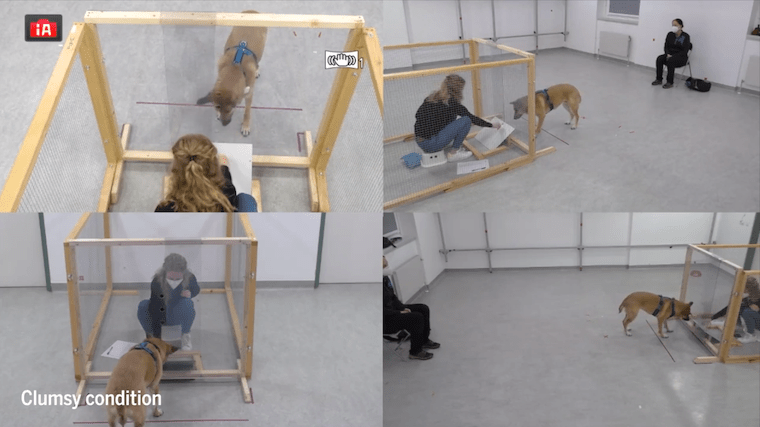A new study conducted at the University of Veterinary Medicine in Vienna suggests that dogs actually understand the intention behind our interactions.
In the study, humans withheld treats from dogs, either “clumsily” or purposefully. Dogs displayed more frustration when humans purposefully withheld a treat.
“Everybody knows that if you give a dog a treat, it’ll take the treat and it’ll come back to you for more treats,” said Dan Riskin, CTV News’ science and technology specialist, “But the question is: does the dog really know what you’re thinking? Is it really just measuring if it got a treat, or does it know what your intentions are?”
The Experiment
The dogs went through three different scenarios with a handler in a Plexiglas cage.
Initially, the dogs are given treats, then the handler:
- Holds out the treat but takes it away on purpose. The dog thinks the person is being mean.
- Tries to give the dog another treat and “keeps dropping it.” The dog interprets this as clumsy.
- Tries to give the dog a treat, but there is “something in the way” and they can’t get it to the dog for whatever reason
The researchers posed the question: If the dogs are getting the same amount of treats in all three scenarios, are they going to react differently based on the person’s acting or what the presumed intentions are? In other words, is the dog sizing you up?
In the first “mean” scenario, the dog leaves sooner. They don’t hang out as much.
In the second “clumsy” scenario, where the person keeps dropping the treat and fumbling, the dog tends to stick around a little longer, presumably thinking the person might figure it out.
And, lastly, when the person tries to give the dog a treat but there is “something in the way,” the dog figures that out and spends the least amount of time there.
Significance of Grasping Intention
In 2021, researchers ran a common experimental setup, known as the “unable vs. unwilling paradigm,” with dogs for the first time. This also took place in Plexiglas cages. Probing the capacity of dogs to distinguish human intentions could help establish to what extent they possess “theory of mind,” or the ability to ascribe mental states to others. Not to mention, this skill “would have been of immense value for dogs’ common history with humans,” according to a study published in Scientific Reports.
Riskin told CTV News that the research is useful because it can help trainers understand how to communicate with dogs in the best possible way. It can also help people understand their own evolutionary history. “Fundamentally, the relationship between humans and dogs is far more interesting than just preventing your dog from pooping in the living room,” he said. “It’s a good deal on both sides and that evolutionary sequence is unique.”









